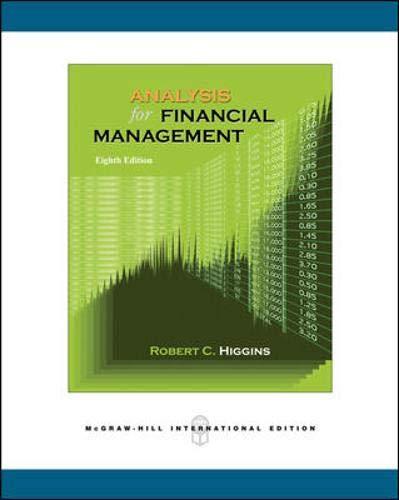Answered step by step
Verified Expert Solution
Question
1 Approved Answer
deductibility of -Select-principal interest dividend but not -Select-principal interest dividend consisted of -Select-100% 50% 0% taxed at -Select-equivalent higher lower deductibility has a -Select-stronger weaker

deductibility of -Select-principal interest dividend
but not -Select-principal interest dividend
consisted of -Select-100% 50% 0%
taxed at -Select-equivalent higher lower
deductibility has a -Select-stronger weaker
corporate use of -Select- equity debt
which is known as -Select-asymmetric pecking symmetric
known as -Select-asymmetric pecking symmetric
-Select- Pecking Signaling Trade-off theory recognizes
stock price will -Select-rise decline.
Capital Structure and Leverage: Capital Structure Theory Modern capital structure theory began in 1958 when Professors Modigliani and Miller (MM) published a paper that proved under a restrictive set of assumptions that a firm's value is unaffected by its capital structure. By indicating the conditions under which capital structure is irrelevant, they provided clues about what is required to make capital structure relevant and impact a firm's value. In 1963 they wrote a paper that included the impact of corporate taxes on capital structure. with the tax deductibility of | interest 'v | payments, but not payments, and if all their other assumptions held, they concluded that an optimal capital structure consisted of 10 %debt. This paper was then modified when Merton Miller brought in the effects of personal taxes. Bond interest income is taxed at 1-select- | rates than income from stocks (received as dividends and capital gains). Consequently, investors are willing to accept relatively low before-tax returns on stock as compared to the before-tax return on bonds. Most observers believe that interest deductibility has a l-select- | effect than the favorable tax treatment of income from stocks, so the US. tax system favors the corporate use of debt v MM assumed there are no bankruptcy costs but firms do go bankrupt and bankruptcy costs are high. Bankruptcy-related problems are likely to increase the more debt a firm has in its capital structure. Therefore, bankruptcy costs discourage firms from using debt in excessive levels. This led to the development of the Trade-Off Theory, which states that firms trade off the tax benefits of debt financing against problems caused by potential bankruptcy MM assumed that investors and managers have the same information about a firm's prospects, which is known as -Select information. However, managers have better information than investors, which is known as-select- v, |information. I-Select- | theory recognizes that investors and managers do not have the same information regarding a firm's prospects. We would expect a firm with very favorable prospects to avoid selling stock, and to instead raise any required new capital by using new debt, even if this moved its debt ratio beyond its target level. The announcement of a stock offering is generally taken as a signal that the firm's prospects as seen by its management are not bright. This suggests that when a firm announces a new stock offering, more often than not, its stock price wil-Select- . This situation implies that a firm will maintain a reserve borrowing capacity, which will give it the ability to borrow money at a reasonable cost when good investment opportunities arise. Firms often use less debt than specified by the MM optimal capital structure in normal times to ensure that they can obtain debt capital later if necessary The pecking order hypothesis states that managers have a preferred sequence of raising capital that impacts their capital structure decisions. The preferred sequence is to raise capital first as spontaneous credit, then retained earnings, then other debt, and finally new common stock. Finally, when a company's stock is selling for a price different than its intrinsic value, the firm's managers can adjust the firm's capital structure to take advantage of the mispricing. Thus, the firm's managers take advantage of windows of opportunity rtoon ht uture I normal tines to ure tnapement arent
Step by Step Solution
There are 3 Steps involved in it
Step: 1

Get Instant Access to Expert-Tailored Solutions
See step-by-step solutions with expert insights and AI powered tools for academic success
Step: 2

Step: 3

Ace Your Homework with AI
Get the answers you need in no time with our AI-driven, step-by-step assistance
Get Started


